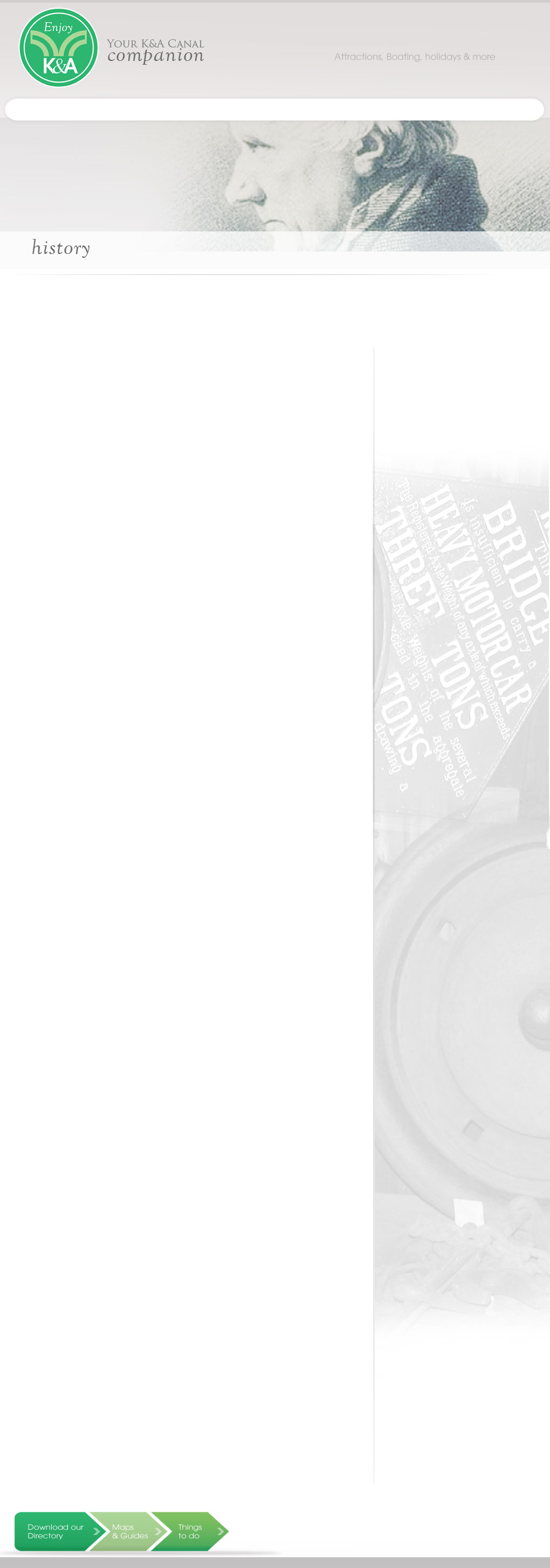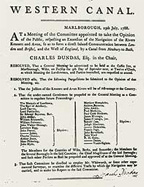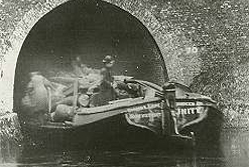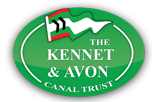

Powered by Camelot Media Ltd

These pages will give you some insight into the way the Kennet and Avon Canal was planned, built and worked during its 200 year history.
Visit the K&A Trust museum at Devizes Wharf for more exciting articles, displays and exhibits, or visit the Trust website:
www.katrust.org
-------------------------------------------------------------------------------------------------------------------
Visit the K&A Trust museum at Devizes Wharf for more exciting articles, displays and exhibits, or visit the Trust website:
www.katrust.org
-------------------------------------------------------------------------------------------------------------------


-------------------------------------------------------------------------------------------------------------------
The History:
Page One
Planning the Canal - The Need
Historically, the Kennet and Avon Canal comprises three waterways, the Avon Navigation from Bristol to Bath (opened in 1727), the man-made canal section from Bath to Newbury (opened in 1810), and the Kennet Navigation from Newbury to Reading (opened in 1723).
Hazardous Sea Route
The sea route between Bristol and London was hazardous during the 18th and early 19th centuries, not only because Atlantic storms and the rugged coast line took their toll on the small coastal sailing ships of the day, but also because a succession of conflicts with France and her allies, frequently made British cargo ships navigating the English channel, the prey of both privateers and warships of the French navy.
Transport by road
As transporting large volumes of goods by road was not viable at the time, both entrepreneurs and traders alike dreamt of a day when Bristol and London could be linked by a safer yet still viable alternative to the hazardous sea route they were of necessity forced to use when transporting their goods.
Avon Navigation
The river Avon had been navigable from Bristol to Bath during the early years of the 13th century but construction of mills on the river forced its closure.
Eventually a 1712 Parliamentary Bill enabled the Bristol to Bath section of the Avon to be made navigable again, although it wasn't until 1727 that the river fully reopened to barge traffic.
Kennet Navigation
Irrespective of this, the enormity of the task meant that progress was slow and it wasn't until 1715 that the Kennet Navigation Bill authorised the making of the river Kennet navigable from Reading on the River Thames to Newbury.
This work was completed by 1723.
Western Canal Project
In the late 1780's canal mania swept Britain, and on 16th April 1788 a meeting of interested parties at the town of Hungerford, under the chairmanship of Charles Dundas the MP for Berkshire, concluded that a junction between the Kennet and Avon rivers would be of material benefit.
As a consequence the then named Western Canal Project was born, with the election of a committee and proposals for a survey.
--------------------------------------------------------------------------------------------------------------
Alternative Routes
Delays
Three engineers, Messrs Barnes, Simcock and Weston, were contracted to carry out survey work, and proposed a route via Hungerford, Marlborough, Lacock, Melksham and Bradford on Avon, reporting an adequate supply of water.There was no lack of support for the project although a second survey was considered necessary and in 1791 engineer John Rennie was asked to carry this out.Reporting directly to the committee, Rennie agreed with the earlier findings, although it was agreed that actual construction would not commence until £75,000 had been raised.
Two further years were to pass before a group of Bristol businessmen, having become impatient with the prevarication of the canal committee organised a secret meeting at the Red Lion public house in Bristol with the intention of taking over management of the canal project.
The canal committee claimed that in two years they had been unable to raise the required £75,000, yet this group of rebellious Bristolians managed to raise £264,000 in share subscriptions at their single meeting.
The outcome was that Charles Dundas moved swiftly to accommodate the new interest, an equitable division of shares was agreed, and the project was able to progress.
Lack of water supply
John Rennie was commissioned to carry out a third survey, reporting back through Robert Whitworth the committee's engineer.
This time Rennie found that there was in fact insufficient water available on the original Marlborough route and recommended that the canal should be built via Devizes. It is likely however that it was not only the lack of water that prompted this decision, and in his 1839 book Chronicles of the Devizes, Waylen states that the new route was in fact agreed as a result of lobbying by two Devizes MPs.
Whilst Devizes gained economically from this decision, Marlborough did not, and as plans for a branch canal to Marlborough had also fallen through, the people of that town felt very hard done by.
They were ultimately placated however by an offer of reduced carriage tolls for goods dispatched to Marlborough.
Royal Assent
The Kennet and Avon Canal Act received Royal Assent on April 17th 1794 and Rennie was appointed consulting engineer.
Summit route altered
An independent assessment of the proposals, however, was sought from another engineer William Jessop who, in a report later that year, largely agreed with Rennie's proposals but suggested a number of small route changes.
The most important of these was a recommendation that the summit route should be moved slightly to the north.
This avoided the need for a tunnel of more than two miles in length with a saving in both construction time and money.
It did, however, require water to be pumped to a much shorter summit pound necessitating 6 extra locks of eight feet rise each, and a length of deep cutting.
The arrangements subsequently implemented to allow this to happen, resulted in the creation of Crofton pumping station and the reservoir at Wilton Water.
However Lord Bruce the local landowner was having nothing to do with a deep cutting through his land, and insisted on a tunnel instead.
As a consequence a costly 502-yard construction had to be built, and this became known as the Bruce Tunnel.
Planning the Canal - The Need
Historically, the Kennet and Avon Canal comprises three waterways, the Avon Navigation from Bristol to Bath (opened in 1727), the man-made canal section from Bath to Newbury (opened in 1810), and the Kennet Navigation from Newbury to Reading (opened in 1723).
Hazardous Sea Route
The sea route between Bristol and London was hazardous during the 18th and early 19th centuries, not only because Atlantic storms and the rugged coast line took their toll on the small coastal sailing ships of the day, but also because a succession of conflicts with France and her allies, frequently made British cargo ships navigating the English channel, the prey of both privateers and warships of the French navy.
Transport by road
As transporting large volumes of goods by road was not viable at the time, both entrepreneurs and traders alike dreamt of a day when Bristol and London could be linked by a safer yet still viable alternative to the hazardous sea route they were of necessity forced to use when transporting their goods.
Avon Navigation
The river Avon had been navigable from Bristol to Bath during the early years of the 13th century but construction of mills on the river forced its closure.
Eventually a 1712 Parliamentary Bill enabled the Bristol to Bath section of the Avon to be made navigable again, although it wasn't until 1727 that the river fully reopened to barge traffic.
Kennet Navigation
Irrespective of this, the enormity of the task meant that progress was slow and it wasn't until 1715 that the Kennet Navigation Bill authorised the making of the river Kennet navigable from Reading on the River Thames to Newbury.
This work was completed by 1723.
Western Canal Project
In the late 1780's canal mania swept Britain, and on 16th April 1788 a meeting of interested parties at the town of Hungerford, under the chairmanship of Charles Dundas the MP for Berkshire, concluded that a junction between the Kennet and Avon rivers would be of material benefit.
As a consequence the then named Western Canal Project was born, with the election of a committee and proposals for a survey.
--------------------------------------------------------------------------------------------------------------
Alternative Routes
Delays
Three engineers, Messrs Barnes, Simcock and Weston, were contracted to carry out survey work, and proposed a route via Hungerford, Marlborough, Lacock, Melksham and Bradford on Avon, reporting an adequate supply of water.There was no lack of support for the project although a second survey was considered necessary and in 1791 engineer John Rennie was asked to carry this out.Reporting directly to the committee, Rennie agreed with the earlier findings, although it was agreed that actual construction would not commence until £75,000 had been raised.
Two further years were to pass before a group of Bristol businessmen, having become impatient with the prevarication of the canal committee organised a secret meeting at the Red Lion public house in Bristol with the intention of taking over management of the canal project.
The canal committee claimed that in two years they had been unable to raise the required £75,000, yet this group of rebellious Bristolians managed to raise £264,000 in share subscriptions at their single meeting.
The outcome was that Charles Dundas moved swiftly to accommodate the new interest, an equitable division of shares was agreed, and the project was able to progress.
Lack of water supply
John Rennie was commissioned to carry out a third survey, reporting back through Robert Whitworth the committee's engineer.
This time Rennie found that there was in fact insufficient water available on the original Marlborough route and recommended that the canal should be built via Devizes. It is likely however that it was not only the lack of water that prompted this decision, and in his 1839 book Chronicles of the Devizes, Waylen states that the new route was in fact agreed as a result of lobbying by two Devizes MPs.
Whilst Devizes gained economically from this decision, Marlborough did not, and as plans for a branch canal to Marlborough had also fallen through, the people of that town felt very hard done by.
They were ultimately placated however by an offer of reduced carriage tolls for goods dispatched to Marlborough.
Royal Assent
The Kennet and Avon Canal Act received Royal Assent on April 17th 1794 and Rennie was appointed consulting engineer.
Summit route altered
An independent assessment of the proposals, however, was sought from another engineer William Jessop who, in a report later that year, largely agreed with Rennie's proposals but suggested a number of small route changes.
The most important of these was a recommendation that the summit route should be moved slightly to the north.
This avoided the need for a tunnel of more than two miles in length with a saving in both construction time and money.
It did, however, require water to be pumped to a much shorter summit pound necessitating 6 extra locks of eight feet rise each, and a length of deep cutting.
The arrangements subsequently implemented to allow this to happen, resulted in the creation of Crofton pumping station and the reservoir at Wilton Water.
However Lord Bruce the local landowner was having nothing to do with a deep cutting through his land, and insisted on a tunnel instead.
As a consequence a costly 502-yard construction had to be built, and this became known as the Bruce Tunnel.

Notice calling
for meeting in 1788
for meeting in 1788

'Unity' enters the Bruce Tunnel
Copyright the Kennet & Avon Trade Association MMXII

|
|
|
|
|
|
|
|
|
|
Sponsored by the Kennet & Avon Trade Association


